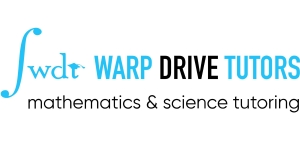Advanced Level Mathematics (Edexcel, OCR, MEI, AQA, Cambridge)
Some Basics:
Maths is the most popular A level subject. It is highly regarded by all universities and while all courses will accept it, most courses in Engineering, Economics, Architecture, Physics, Chemistry, Computer Science and of course Mathematics require it. Unlike at GCSE, where 60% would get you a grade 7, the grade boundaries at A level are much higher and scores as high as 45% can equate to a U grade. Until 2018, A Level Maths was taught in modules, and students were often given a choice of modules by their schools. The current course is linear, so your grade is determined exclusively by the two pure and one applied examinations you sit at the end of year 13. The Pure content includes algebra, trigonometry and calculus, just beyond the AB Calculus AP exam. The Applied content is a mixture of mechanics and statistics with plenty of real world context questions.
Pure topics usually covered include:
- Proof: algebraic, exhaustion, counter example
- Exponentials and Logarithms: use laws of logs and laws of indices, change base of logs
- Algebra: polynomial equations, completing the square, partial fractions, Binomial expansion
- Co-ordinate Geometry: finding equations of lines, midpoint, distance, equation of perpendicular bisector, proof
- Functions: modulus, composite and inverse, graph transformations
- Trigonometry: identities and equations, reciprocal and inverse functions, compound angles
- Vectors: magnitude and direction, solve geometric problems
- Differentiation: polynomials, exponentials, trigonometry chain, product and quotient rules, connected rates of change, tangents and normal, second derivatives, optimisation, first order differential equations
- Integration: polynomials, trigonometry, exponentials, logarithms, by substitution, by parts
- Numerical methods: trial and improvement, iterative formulae, Newton-Raphson, trapezium rule
Statistics topics usually covered include:
- Graphs: histograms, cumulative frequency curves, box and whisker plots
- Regression: scattergraphs, interpolation, correlation, regression equation, non-linear regression, spearman’s rank
- Summary statistics: averages, variance, range, IPR, variance, linear interpolation
- Probability: venn and tree diagrams, set notation, conditional probability
- Random Variables: pdfs, expectation, Binomial, normal, linear transformations
- Hypothesis testing: significance levels, critical values, Chi Squared, t-tests
Mechanics topics usually covered include:
- Kinematics: constant acceleration and SUVAT, variable acceleration calculus
- Graphs: distance-time, velocity-time
- Forces: resolve forces, problems with vectors, connected particles, inclined planes, Friction
- Moments: equilibrium, parallel and non-parallel coplanar Forces
Typical problem areas include:
- Making sense of the variables and relationships in differential equations and connected rates of change
- Finding additional angles when solving trigonometric equations
- Identifying the correct approach for integration, especially if the integrand needs to be split into partial fractions
- Understanding the comparisons in hypothesis testing
- Multi-stage mechanics problems where Forces must be resolved before SUVAT can be applied
How a tutor can help:
Bright students can easily secure a good grade on their GCSEs just by paying attention in lessons. Unfortunately, that’s not the case at A Level! There is a lot of content and not much time, which means that most of the practice and consolidation needs to be done independently. For many, this is a seismic shift in the way they are used to working, and learning to work independently is a steep learning curve. Compounding the issue is that the very nature of the subject means that if you didn’t master the initial content, it is nearly impossible to work independently on the more complex material. A tutor is a great way to fill in any gaps in your understanding, while you are keeping pace with the content in your lessons. Furthermore, the syllabus changed in 2018 to encourage students to make full use of their calculators. Understandably, it is taking schools a little longer to catch up with these changes, and you may find that you are not benefiting from the full capability of your calculator. A tutor can show you how to use your calculator to solve equations, calculate definite integrals and even find equations of tangents and normal.
